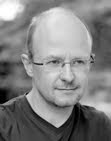Tuesday, May 31, 2011
Sunday, May 15, 2011
Another Blurb booklet
I compiled a Blurb book with 53 pictures from the April study trip through Luxemburg, Germany, Switzerland and France. I'm always having a ball putting together a booklet. Blurb is great and it is getting better all the time. The BookSmart software offers plenty of flexibility (more than I need, really) and they are offering always more features at the top end for demanding photographers. Their new ProLine with high quality papers (pearl and matte), custom end sheets and hardcover linens looks great.
I had around 28 rolls of 120 film to start with from which I scanned about 80 negatives. I lost one complete film due to light intrusion in the exposed roll. I had some problems with light leakage towards the end of some of the other rolls too. I am not sure why that is as I haven't had that problem before with the Bronica RF645. Apparently the film is not tightly enough wound. Maybe the fact that I have been shooting 220 format film for a long time and only recently switched to 120 again (taking care to adjust the position of the in-camera pressure plate) has something to do with it. I'll wrap my film in aluminium foil from now onwards to be on the safe side.
There was a mix of films, some of which I even hadn't used before, as the Kodak PX125. I was very pleased with the latter: a beautiful, very delicate emulsion that results in very low grain and beautiful tones. I'll certainly try that again. The chromogenic Ilford XP2 scans, on the other hand, very grainy. Works fine too if that is the effect you're after. The other emulsions - Tri-X, APX 100 - are somewhat in between. There was also a bunch of old Efke 100 (all my film was outdated by the way) which I thought didn't work that well for architecture. I think it's best used for portraits.
I had mixed results with the duotoning. I relied on the same toning as used for the mountain portraits with which it works very well. Here I had trouble with shadow parts that clogged as a result of the toning. So I had to tweak some images quite a bit. And I am not universally satisfied with the result.
Qua images I am reasonably content. The idea was to create a documentary record of the journey and I think that has worked well. I think the images are very solid. Fairly straightforward, sober but strong compositions, almost modernist in their simplicity. Many are very tightly composed, as I am wont to do these days. I've also tried to keep my vertical lines very straight, which gives an extra coherence to the images. What pleases me is the variety in perspectives that a single standard lens is able to provide. One hardly needs more. I used to like my 25mm Distagon on the Contax but now I find a 28 mm already impossibly wide. I believe I can do anything I want in the 35 mm to 75 mm range.
I had around 28 rolls of 120 film to start with from which I scanned about 80 negatives. I lost one complete film due to light intrusion in the exposed roll. I had some problems with light leakage towards the end of some of the other rolls too. I am not sure why that is as I haven't had that problem before with the Bronica RF645. Apparently the film is not tightly enough wound. Maybe the fact that I have been shooting 220 format film for a long time and only recently switched to 120 again (taking care to adjust the position of the in-camera pressure plate) has something to do with it. I'll wrap my film in aluminium foil from now onwards to be on the safe side.
There was a mix of films, some of which I even hadn't used before, as the Kodak PX125. I was very pleased with the latter: a beautiful, very delicate emulsion that results in very low grain and beautiful tones. I'll certainly try that again. The chromogenic Ilford XP2 scans, on the other hand, very grainy. Works fine too if that is the effect you're after. The other emulsions - Tri-X, APX 100 - are somewhat in between. There was also a bunch of old Efke 100 (all my film was outdated by the way) which I thought didn't work that well for architecture. I think it's best used for portraits.
I had mixed results with the duotoning. I relied on the same toning as used for the mountain portraits with which it works very well. Here I had trouble with shadow parts that clogged as a result of the toning. So I had to tweak some images quite a bit. And I am not universally satisfied with the result.
Qua images I am reasonably content. The idea was to create a documentary record of the journey and I think that has worked well. I think the images are very solid. Fairly straightforward, sober but strong compositions, almost modernist in their simplicity. Many are very tightly composed, as I am wont to do these days. I've also tried to keep my vertical lines very straight, which gives an extra coherence to the images. What pleases me is the variety in perspectives that a single standard lens is able to provide. One hardly needs more. I used to like my 25mm Distagon on the Contax but now I find a 28 mm already impossibly wide. I believe I can do anything I want in the 35 mm to 75 mm range.



